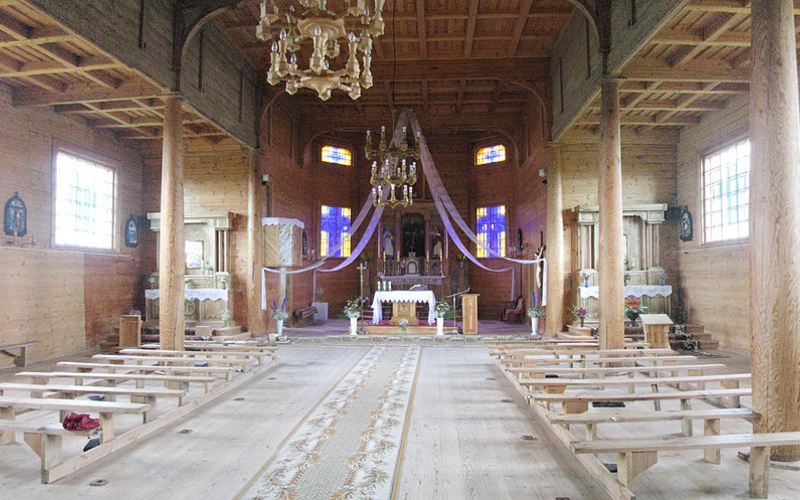- Vitebsk region, Braslav District, Drysviaty, Tsentralnaya street, 38
History
The historical settlement of Drysviaty was located on Castle Island, not on the shore of Lake Drysviaty (Drūkšiai), where the modern village is located. It was on this island that the first Catholic church was built in 1514, funded by Grand Duke of Lithuania Sigismund I in honor of the Blessed Virgin Mary. In 1622, the settlement burned down and was rebuilt on the shore.

In 1725 it burned down, and voivode of Vilnius Ludwik Pociej financed the construction of a new wooden church, which was dedicated to the apostles Peter and Paul. In 1929 a wooden church was built according to the project of Leon Vitan-Dubejkowski, which was used as a warehouse after the Great Patriotic War. In 1991 the church was returned to the Catholics and its reconstruction began, which was completed in 1994. This catholic church, a monument of wooden architecture, stands out for its rectangular shape and high five-tiered bell tower. Inside the church, decorated with a coffered ceiling and ornamental paintings, there is a valuable icon of the Adoration of the Magi, created in the 16th century.
The Church Today
The Church of Saint Peter and saint Paul is a monument of wooden architecture with elements of the Art Nouveau style. The church of Peter and Paul housed a valuable icon from the first half of the 16th century, "Adoration of the Magi," which is now located in the Minsk Museum of Ancient Belarusian Culture.

This church is steeped in remarkable history. Over the centuries, it has survived fires, wars, and even transformation into a warehouse after World War II. Its uniqueness lies in its history.